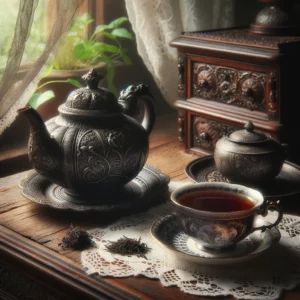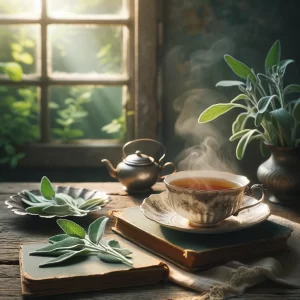Assam Green Tea is not just a beverage; it’s an experience that combines rich flavors with a storied history, making it a must-try for tea enthusiasts around the world. This article dives deep into the world of Assam Green Tea, from its origins in the lush landscapes of India to the perfect way to brew a cup that captures its essence. Whether you’re a seasoned tea lover or new to the tea community, join us on this journey to uncover the secrets of Assam Green Tea.
Table of Contents
- Introduction
- The Origins and History
- What Makes Assam Green Tea Special?
- Brewing the Perfect Cup of Assam Green Tea
- Ways to Enjoy Assam Green Tea
- The Best Pairings for Assam Green Tea
- Where to Find Assam Green Tea and Storage Tips
- Cultivation and Processing
- Conclusion
Introduction
Assam Green Tea, a jewel from the verdant valleys of Assam, India, stands out in the world of teas with its robust flavor and vibrant history. Known for its bright color and invigorating taste, Assam Green Tea offers a unique twist on the traditional green tea experience. In this article, we’ll explore everything from its rich origins to the art of brewing the perfect cup, ensuring you have all the knowledge you need to fully appreciate this delightful beverage.
The Origins and History
The story of Assam Green Tea begins in the Assam region of India, a place with the perfect storm of rain, humidity, and temperature, making it one of the world’s largest tea-growing areas. Unlike its more famous sibling, Assam Black Tea, Assam Green Tea is less oxidized, preserving its natural green color and offering a fresher flavor profile. Tea has been cultivated in Assam for thousands of years, but the commercial production of green tea is a relatively recent development, aimed at offering a healthier alternative that retains more of the tea leaf’s natural antioxidants.
What Makes Assam Green Tea Special?
Assam Green Tea’s uniqueness lies in its terroir – the specific environmental conditions in which it’s grown. The Assam valley provides a rich, loamy soil and a climate marked by heavy rainfall and warm temperatures, contributing to the tea’s bold and brisk flavor. This tea’s leaves are larger than those of other green teas, resulting in a stronger taste that can stand up to multiple infusions. Its rich, malty flavor, with hints of grass and a slight natural sweetness, sets it apart from the more vegetal taste of other green teas.
Brewing the Perfect Cup of Assam Green Tea
To truly appreciate Assam Green Tea, proper brewing is key. Here’s a simple guide to unlocking its full potential:
- Water Temperature: Use water heated to about 80-85°C (176-185°F). Boiling water can scorch the leaves, altering the tea’s natural flavors.
- Amount: For one cup, use about one teaspoon (2-3 grams) of loose leaf tea. Adjust based on your taste preference for a stronger or lighter brew.
- Steeping Time: Let the tea steep for 2-3 minutes. Longer steeping can bring out the bitterness, masking the tea’s subtle flavors.
- Serving: Enjoy the tea plain to savor its rich flavors, or add a slice of lemon to enhance its natural brightness.
Ways to Enjoy Assam Green Tea
Assam Green Tea is versatile, offering various ways to be enjoyed beyond the traditional hot cup. Here are a few suggestions:
- Iced Assam Green Tea: Cool and refreshing, perfect for hot summer days.
- Assam Green Tea Latte: A creamy variation for those who enjoy a smoother texture.
- In Recipes: Use it as a base for smoothies or incorporate it into desserts for a touch of tea flavor.
The Best Pairings for Assam Green Tea
The robust flavor of Assam Green Tea pairs well with a variety of foods. Here are some combinations to enhance your tea experience:
- Morning: A light breakfast of fruit or oatmeal complements the tea’s brightness.
- Afternoon: Pair with savory snacks like nuts or cheese to balance the tea’s maltiness.
- Dessert: Enjoy with sweet treats like shortbread cookies or sponge cake to highlight its slight sweetness.
Where to Find Assam Green Tea and Storage Tips
High-quality Assam Green Tea can be found in specialty tea shops or online. Look for brands that source directly from Assam to ensure authenticity and freshness. To maintain its flavor, store the tea in a cool, dark place in an airtight container, away from strong odors and moisture.
Cultivation and Processing
Assam Green Tea undergoes a careful process from leaf to cup. The leaves are plucked, withered to reduce moisture, steamed or pan-fired to halt oxidation, and then rolled and dried. Each step is meticulously managed to preserve the tea’s natural flavors and antioxidant properties.
Conclusion
Assam Green Tea is more than just a beverage; it’s a gateway to exploring the rich tapestry of tea culture. Its unique flavor profile, healthful properties, and versatile brewing options make it a standout choice for tea lovers. We encourage you to experiment with brewing techniques, pairings, and recipes to discover your perfect Assam Green Tea experience.




